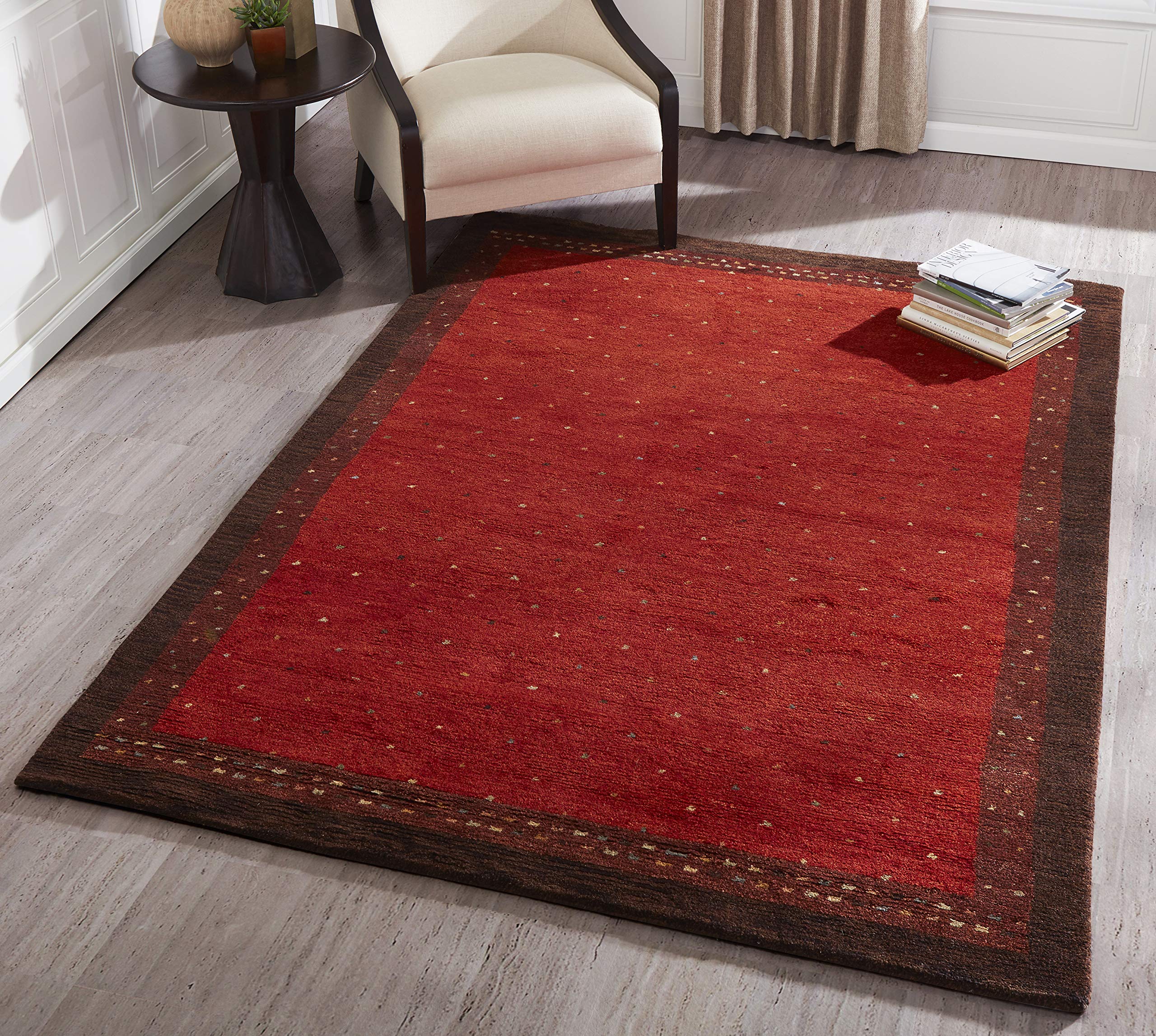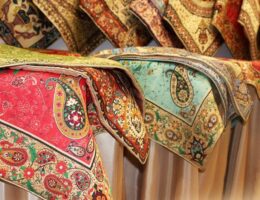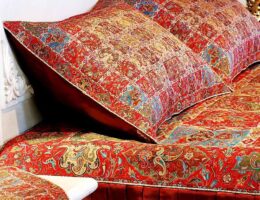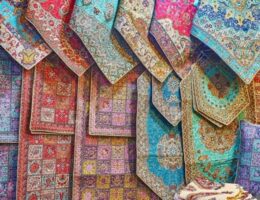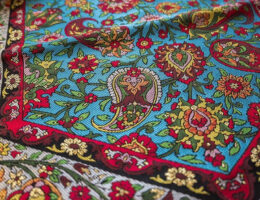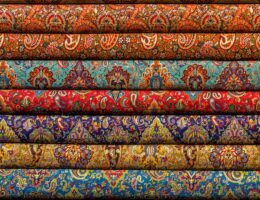IRAN ART EXHIBITION: PERSIAN GABBEH CARPET IS LIKE MUSIC FOR YOUR EYES
Persian Gabbeh is a hand-knotted (handmade) thick Persian rug with long pile. It is made by the nomads of Fars province in southern Iran, of which the famous city of Shiraz is the capital.
The most famous nomad group of this region is the Qashqai Tribe. Although the existing few old pieces of Gabbeh rugs are not more than 100 years old, but the existence of Persian Gabbeh was recorded in an order issued by Shah Tahmasp, the second monarch of the Safavid dynasty (1502-1736) to use Gabbeh among other rugs to welcome and honor King Homayun of India who took refuge to Iran. Shah Tahmasp himself knew how to do miniature painting and he had made few rug designs himself.
Gabbeh like many other types of Persian rugs is made with local handspun wool and vegetable dye. The KPSI (knot per square inch) is around 50. The foundation of authentic Persian Gabbeh (the warp) is wool, so Gabbeh is a wool on wool rug.
IRAN ART EXHIBITION: Since there are no chemicals and synthetics involved in its material and dye, it is fair to say that Gabbeh is a nature, weaver and user friendly rug. Natural dye and fine local wool with long fibers make the wool lustrous. The designs are simple and children like paintings which bring peace of mind to homes and offices which use Gabbeh as floor covering.
Although tribal and rural, but the abstract and cubist designs of Persian Gabbeh look so modern and match the interiors of today’s homes. Simplified human, animal, and tree motives are usually utilized by Gabbeh weavers who use their imaginations and the environment around them to weave such designs.
In the past, Gabbeh and other rugs made by the nomads were not for sale and they were made for domestic use at homes and tents. Therefore, the weavers were free to use the designs and motives they liked, since they did not have to take the customers’ or the market’s taste into account. It is difficult to classify the designs of Gabbehs, as there are many designs which do not follow any preset rules therefore do not fall into specific categories.

Gabbeh or gabba (Persian: گبه) carpets are a traditional variety of Persian carpet. Gabbeh is known as gava in Kurdish and Luri and is also called khersak (خرسک) in Bakhtiari, literally meaning a “bear’s cub”. Traditionally a sleeping rug, a gabbeh is a hand-woven pile rug of coarse quality and medium size (90 x 150 cm, 3 by 5 ft, or larger) characterized by an abstract design that relies upon open fields of color and a playfulness with geometry. This type of rug is popular among the populations of the Zagros Mountains of Iran, including Kurdish, Luri and Qashqai people. The gabbeh is usually crafted by women.
Gabbeh carpets are much thicker and coarser than other Persian carpets; sometimes they can be as much as one inch or 2.5 cm in depth. In fact, they are more a variety of kilim than carpet. The word “gabbeh” comes from the Persian گبه, meaning raw, natural, uncut. This is a rough and primitive carpet.
Gabbeh patterns are of a very basic kind with only a limited number of decorative, mostly rectangular objects resembling mainly animals. In gabbeh usually bright colors, such as yellow and red, are used. Although large fields of solid color are used in gabbeh designs, the color is variegated (the color varies throughout the rug, with the appearance of differently colored zones).
IRAN ART EXHIBITION: Gabbehs are made of natural, handspun wool yarn and all the colors are created with natural plant dye. Due to its relative ease of production (less precise pattern, small number of knots per square centimeter, etc.) a gabbeh is one of the less expensive varieties of Persian carpet.
In the 1980s, after the Iranian artist Parviz Tanavoli had experimented with vegetally dyed gabbehs, Gholamreza Zollanvari began producing the rugs in larger quantities, employing Qashgayi and Luri weavers. Increased production by the Zollanvari family, including their introduction of new patterns, exerted considerable influence on European rug markets.
